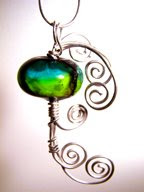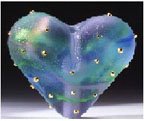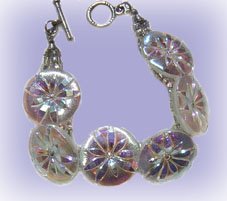
These are the most colorful of the metal beads. They originate from China and are multi-colored.
Here are two of my creations using Cloisonné-enamelled beads and mixing them with Swarovski Crystal, vintage Murano glass and chain. All of these elements were purchased in two of my favorite stores in Manhattan…Beads World on Broadway and Bruce Frank Beads on the Upper West Side of Manhattan.
The first, is a star shaped pendant slide. The chain is adorned with six…five mm round Swarovski crystals. Added to that are smaller Swarovski crystals, bicone, in an asymmetrical pattern. The necklace measures 16” and closes with a lobster clasp.
The second, is a longer pendant chain. It not only is adorned with cloisonné beads but boasts of a multitude of glass beads from Czechoslovakia. The pendant is a vintage foil Murano glass bead, found at Bruce Frank Beads.
This necklace measures 28” including the pendant.
Next week, I will be showing wonderful mixtures of beads, so please keep looking.









































